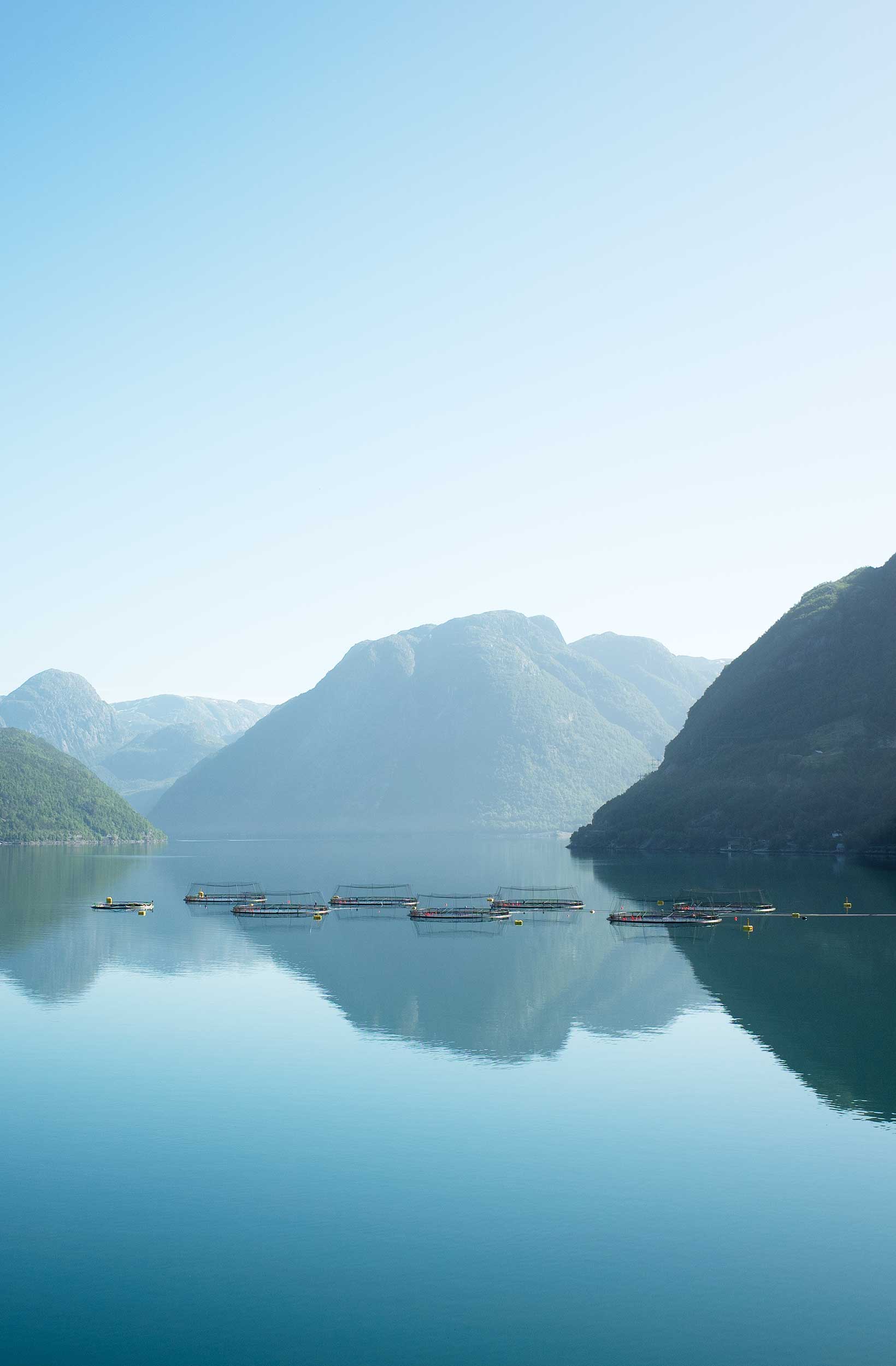TRACKING TECHNOLOGY
Tracking and provenance technology gives the seafood industry better control over the value chain.
Tracking technology creates more efficient and sustainable value chains, as it secures data that shows everything from temperature of the fish to location during transport. For consumers, this signifies safer, more traceable and more sustainable food. At the same time, monitoring where the fish comes from, its growing and storage conditions, and reducing food waste remain of critical concern to seafood consumers who care deeply about sustainability.
According to a recent IBM study, 71% of consumers indicate that traceability is important to them and that they are willing to pay a premium for brands that provide it. Customers are also demanding more documentation about the food they eat. This new blockchain-based network will allow customers in-store to know the fjord where the fish is from, when it was fished, the feed it has eaten and whether the facility uses sustainable methods. Customs agencies will be able to more easily access data about volume and location of shipments to expedite customs clearance. By sharing all this information across the supply chain, seafood producers who invest in quality will also be able to charge a premium, increasing pay for the people who catch your fish.
Robert Eriksson, CEO of Sjømatbedriftene (The Norwegian Seafood Association), believes that the technology will be of great significance going forward and that it will increase the competitive edge of the industry: “Norwegian seafood is known for its quality. Yet we still do not have the ability to trace where the fish came from, how it was grown or how it was stored. This creates the potential for fraud and food waste. Blockchain can help eliminate these problems with a transparent, accountable record of where each fish came from. We believe that this is only the start of something that will mean a great deal for the industry by creating more sustainable food production, which in turn will increase the return for producers,” Eriksson states.
The technology
Blockchain technology can help seafood producers create a “single version of the truth” about supply chain events, allowing consumers to trace their seafood products directly back to the source and enabling producers to tell stories about the products, where they come from, and how to prepare them. The private blockchain network records data about catch location and time, supply chain events like shipping updates and customs clearance, and even temperature, which can then be shared with permissioned parties.
Seafood trust is a secure “tracking hub” that facilitates the gathering of all relevant data, in blockchain and effectively shared with various stakeholders such as suppliers, governments, or importers. Information and data stored in blockchains cannot be changed or tampered with. It is the various manufacturers who determine what information is located where in the chain and they own the data. A member of a block can provide data to multiple members in other blocks. This means that data sharing increases value and knowledge. The data is available in real time. Atea provides consulting services on the technology.
Our history
In 2019, IBM, in collaboration with Atea, launched a blockchain-based food tracking tool that will enable it to track the fish’s journey from the sea to the dinner table. Hyper Insight- based on IBM’s Food Trust platform- was launched globally during the Seafood Days 2020 at Hell in Stjørdal. After the global launch, Atea, IBM and the Seafood Association wanted to offer the network to the Norwegian seafood industry. Norwegian Seafood Trust is the fruit of this collaboration.
Through the NST, the Seafood Assocation, in collaboration with IBM and Atea, offer the tracking service to individual companies, that will be able to use the data for marketing, analytics and documentation. Atea will be the supplier and operating partner of the technical solution. Thus, we have secured the very best supplier in the market to assist the industry.
Over time, the industry has been challenged to establish documentation systems that tells us more about the origins and provenance of the food we eat, including where the fish comes from, what feed it has been given and how sustainable the production has been. As a member of our tracking network and with use of blockchain technology, this will be possible for you as a producer. Through our tracking service we will be able to provide data and information about everything from conditions where the fish came from to accurate nutritional content. This measn that we are now giving the consumer access to all relevant information about the food they are about to serve for dinner.
In short: The industry actors can document how they produce their product from start from finish. Together with the industry, we are setting new market standard that will reduce waste and fraud, and give the consumers proof of provenance. This will contribute to the Norwegian seafood industry improving and expanding market access, and receive a higher price for their products.
What does the Norwegian Seafood Trust mean for the Norwegian seafood industry?
- The collaboration between IBM, NST and Atea will give the producers of Norwegian seafood an advantage in the market
- Increased value creation of Norwegian products and services
- Create consumer safety in a competitive market in the future
- We leverage each other’s expertise
- We share experiences and knowledge

From the press:
Salmon producers are going to use blockchain tracking, read the story on e24.
Winning the consumers trust by using blockchain technology, read the story here.
Links for more information:
Read what IBM says about tracking technology.
Sporing av fisk vil øke verdien på sjømateksporten, les hva ATEA sier.
Examples on how blockchain technology increases the value in other industries because of increased tracking, safety and transparency in other industries:
Walmart: https://www.youtube.com/watch?v=SV0KXBxSoio
IBM: https://www.youtube.com/watch?v=QWijlTDHLMQ
Carrefour: https://www.youtube.com/watch?v=sa8jFRJA5h4

